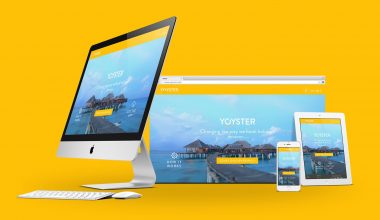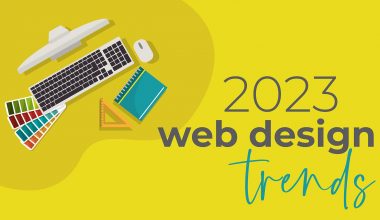Typography plays a crucial role in web design. It is the art and technique of arranging type to make written language legible, readable, and appealing when displayed. The right typography can make a website look professional, modern, and aesthetically pleasing. On the other hand, a poorly chosen font can make a website difficult to read, unprofessional, and visually unappealing. In this article, we will explore the role of typography in web design and offer tips for choosing and using typography effectively.
The Importance of Typography in Web Design
Typography is an important part of web design because it affects how users read and perceive the content. A well-designed font can create an inviting and readable experience, while a poorly designed font can make content difficult to read and unappealing. Typography is also a powerful tool to convey the brand’s personality, tone, and style. For example, a playful and informal brand may use a fun and quirky font, while a serious and professional brand may use a clean and simple font. Typography can also help establish a visual hierarchy, making it easier for users to navigate the website and find the information they need.
Tips for Choosing and Using Typography Effectively
- Choose a Font that Fits the Brand’s Personality and Tone
When choosing a font, it is important to consider the brand’s personality and tone. A font that does not fit the brand’s personality and tone can be jarring and confusing to users. For example, a fun and playful font may not be appropriate for a financial institution. Similarly, a serious and professional font may not be appropriate for a toy company. It is important to choose a font that aligns with the brand’s values, message, and target audience.
- Use a Limited Number of Fonts
Using too many fonts can make a website look cluttered and unprofessional. It is best to stick to a limited number of fonts to maintain a consistent look and feel throughout the website. Two to three fonts are typically enough to create a visual hierarchy and distinguish different types of content. It is also important to choose fonts that complement each other and have good readability when used together.
- Consider Readability and Legibility
Readability and legibility are key factors to consider when choosing a font for a website. Readability refers to how easy it is to read the text, while legibility refers to how easy it is to distinguish individual characters. It is important to choose a font that has good readability and legibility, especially for longer blocks of text. Sans-serif fonts, such as Arial and Helvetica, are generally more legible and readable on screens, while serif fonts, such as Times New Roman and Georgia, are better suited for print.
- Pay Attention to Spacing, Size, and Color
Spacing, size, and color are important aspects of typography that can affect the readability and visual appeal of a website. It is important to choose a font size that is large enough to read comfortably on screens, especially for mobile devices. Line spacing should also be considered to avoid overcrowding and improve readability. Color can also be used to create contrast and highlight important information. It is important to choose a color that complements the font and is easy to read.
Conclusion Typography plays a vital role in web design. It can affect the readability, legibility, and visual appeal of a website, as well as convey the brand’s personality, tone, and style. When choosing and using typography, it is important to consider the brand’s personality and tone, use a limited number of fonts, prioritize readability and legibility, and pay attention to spacing, size, and color. By following these tips, web designers can create websites that are not only visually appealing but also easy to read and navigate.






